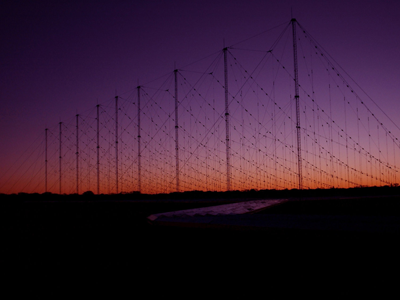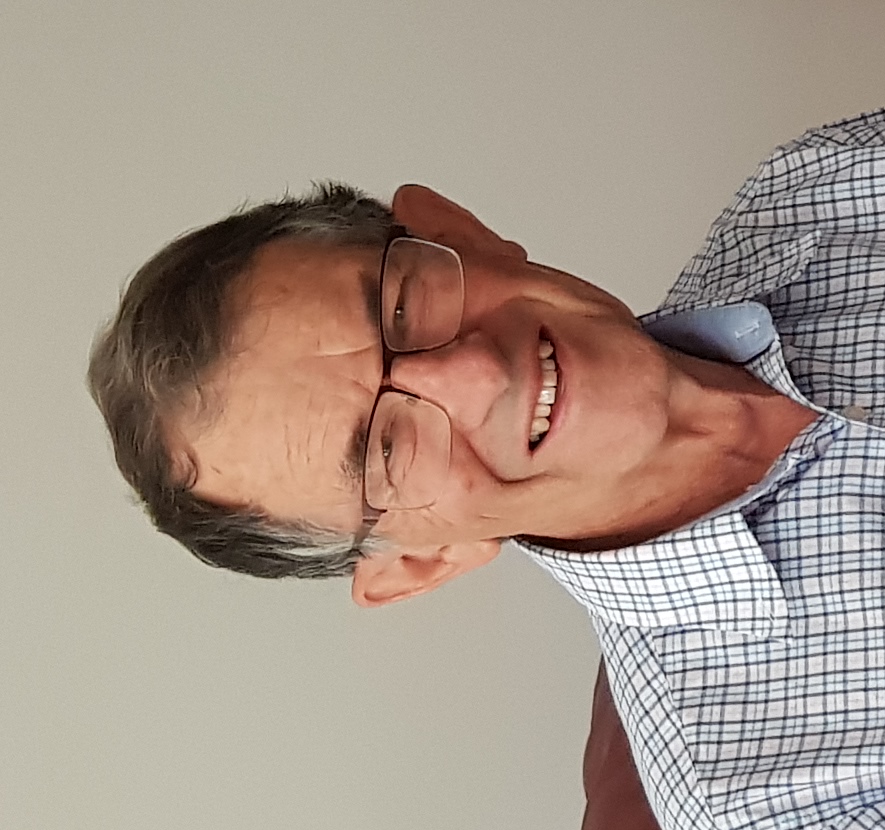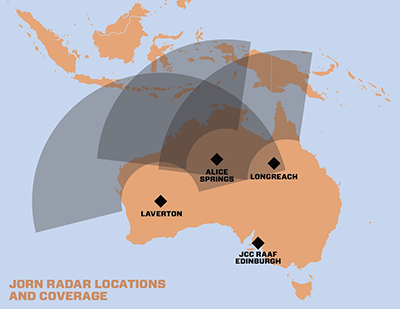The story behind JORN: ‘We young guns were going to make this as good as we could’

Of all Australia's significant defence assets, the Jindalee Operational Radar Network (JORN) is probably the least visible to Australians, and the least appreciated for delivering safety and security to the nation. This is the story of how it grew from humble origins in the desert to become, half a century on, the finest over-the-horizon radar system in the world.
Australia boasts the world's best over-the-horizon radar, a radar that silently but continuously keeps watch over air and sea movements across 37,000 square kilometres, up to 3,000 km from the country's shores.
Today, Jindalee Operational Radar Network (JORN) can claim to be the most sophisticated and capable target tracking science in the world. However, its origins were distinctly more homespun, involving another iconic Australian technology – the Hills Hoist clothesline.
Dr Don Sinnott, an antenna specialist at the Defence Science and Technology Organisation (DSTO), was drafted into the inaugural development team in 1972.

"One of the challenges that faced me was putting up this great array of ironmongery," he recalls. "In the end, the steel fabrication was actually done by Hills Hoist who offered the best price."
The project was breaking ground in every way imaginable.
"The contractors had cleared this area three-kilometres long and about 100-metres wide in the desert," Sinnott says. "The first time I walked out there I thought, 'gee whiz. I hope we got this direction right. Pointing the wrong way, we're in big trouble."
Sinnott, with an advanced degree in computer technology for designing antennas from a New York university, was the first of what has become three generations of Defence scientists to work on the project.
Sinnott's innovations, however, follow on from the work of Scot John Strath and Englishman A. P. Rowe who developed British radar during the 1930s, that helped win the Battle of Britain.
After the war, both men moved to Australia where Rowe worked as scientific adviser on the development of Woomera rocket range before becoming Vice-Chancellor of the University of Adelaide.
Strath was a prime mover for development of JORN. Originally the project was called Jindalee which is an aboriginal word for a place [the] eye cannot see, or somewhere beyond where the eye can see, like over the horizon.
Strath believed the idea of bouncing a high frequency radio signal off the ionosphere to illuminate a target was the simple part.
"He's on record saying it wasn't a technical challenge but a credibility challenge," says Sinnott. "That was his view, but I guess he didn't have as close an insight into the technicalities as many of us did on the ground running."
To Sinnott and the other scientists working with him, the much bigger problem was the ionosphere and how little they knew about it.
"If you talked to the ionospheric physicists on the project, they would say, the biggest challenge was just knowing how this supposedly reflective layer really behaved," says Sinnott.
No one had investigated the subject enough. The US had experimented with a system based in Maine to look east from across the Atlantic for Soviet bombers, but it was never used seriously.
"They had this superb over-the-horizon radar built at a huge cost that really was never, I suspect, even turned on," says Sinnott.
"But we just couldn't afford anything on that scale, and so it was a matter of seeing what corners we could cut, what assistance the US could give us.
"That assistance only came through when the US deemed that we were likely to succeed in our mission without their help, and it would be better if they knew what we were doing," he says.
Despite the technical challenges, Strath was also correct about the credibility gap. The Royal Australian Air Force was initially sceptical about the project. As the Chief Defence Scientist of the day put it: "It didn't conform to the standing paradigms of the Air Force".
Which is to say, it didn't have wings.
It focused on the airborne early warning system that became the Wedgetail system.
"Certainly, in the early days, there was not a lot of high-level support and there was a lot of blood, sweat, and tears getting it over the line, and making sure we could actually prove it worked."
The computers available in the 1980s were rudimentary, which didn't help.
"When I started designing the Stage B antenna, the computer I had available was an IBM 7090 computer, and that had maybe 128KB of disk storage. And that's all I had," says Sinnott.
Defence Science ingenuity came to the rescue in later stages with the organisation building its own computing components.
"Gordon Brimble actually designed and built the core signal processor. It was called the ARO, the arithmetically oriented processor. That was a really significant achievement to build that."
Stage B ran over time and over budget. At one stage, Sinnott had to go, cap in hand, to Strath for a further $10,000 for Hills Hoist to rustproof the antenna with fish oil.
"I think, in retrospect, we probably could have got away with a little lesser performance, but we young guys were going to make this as good as we could," says Sinnott.
These days JORN is undoubtedly the best system of its type in the world, and partly that's due to Australia's specific topography. Over-the-horizon radars are best suited to big countries.

"DSTO, or DSTG now, has made an enormous investment over the years in brainpower and putting really smart young guys and universities and people on the staff to work on these systems," says Sinnott. "Things like target tracking, for example, are extremely challenging in this environment, and we've made advances that I think nobody else really replicated."
It was once believed that, one day, satellite surveillance would make JORN obsolete, but that prediction has not yet come to pass. In 2019, $1.2 billion decade-long refresh program got underway and is now being conducted by BAE Systems Australia.
"This radar detects movement across the surface of the earth. It's designed mainly as an air defence system for aircraft detection, but it will also detect ships, apart from small wooden vessels.
"Perhaps satellite surveillance, one day, will provide a better solution."
For Sinnott, a man in the right place at the right time with the right qualifications, the project was a dream come true.
"They were the greatest years of my professional career as an engineer, without a doubt.
This article is one of series of articles celebrating 115 years of Defence science and technology. Defence science in Australia can be traced back to 1907 when Cecil Napier Hake was appointed Chemical Adviser to the Department of Defence. Today more than 2000 Defence scientists, engineers, IT specialists and technicians form the Defence Science and Technology Group responsible for providing scientific advice and high-tech solutions for Australia's Defence and national security agencies.

